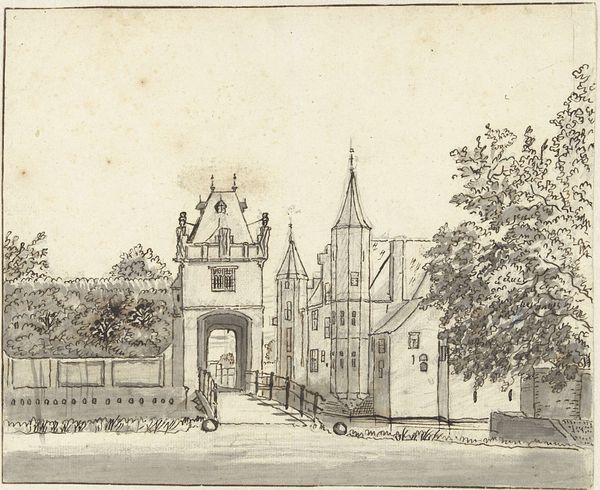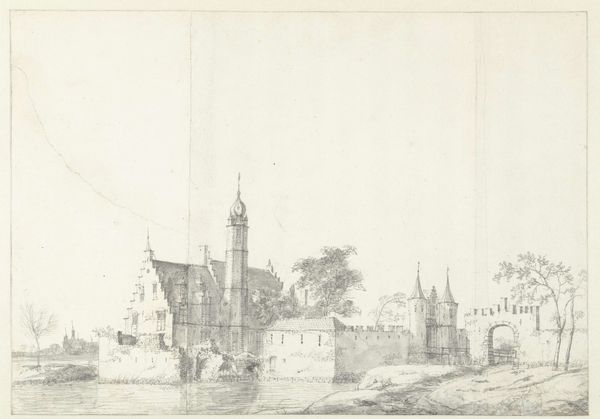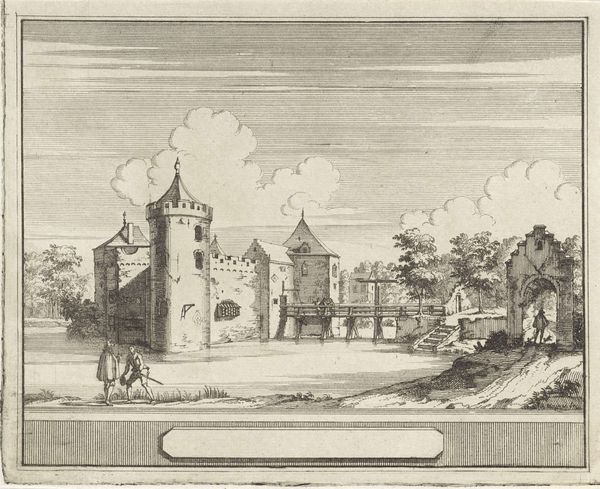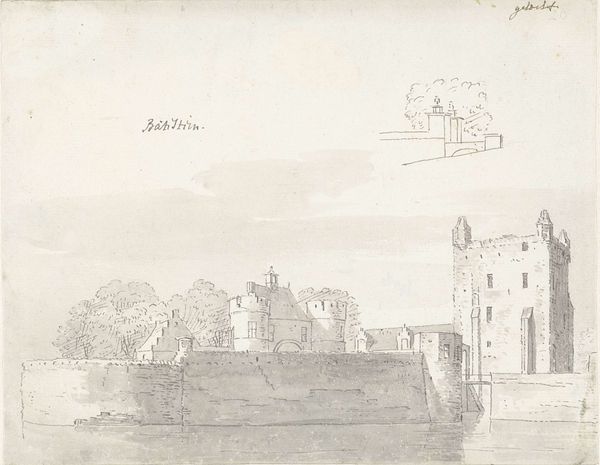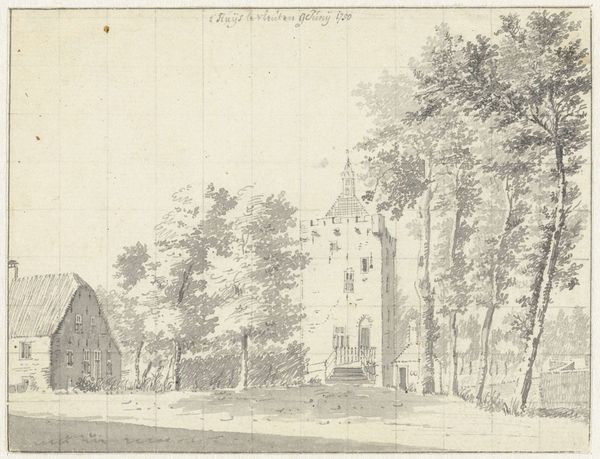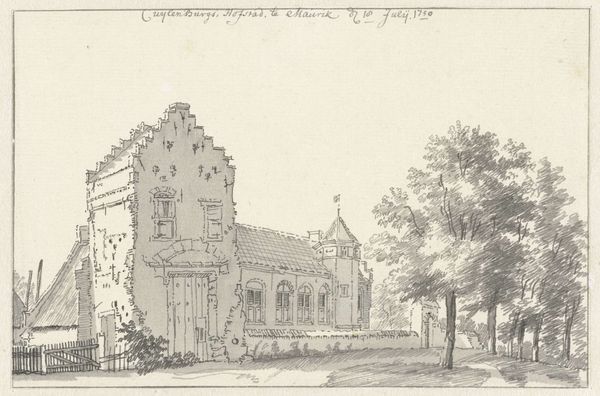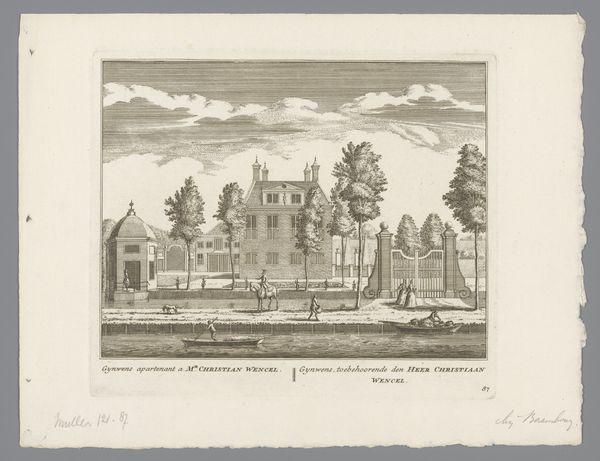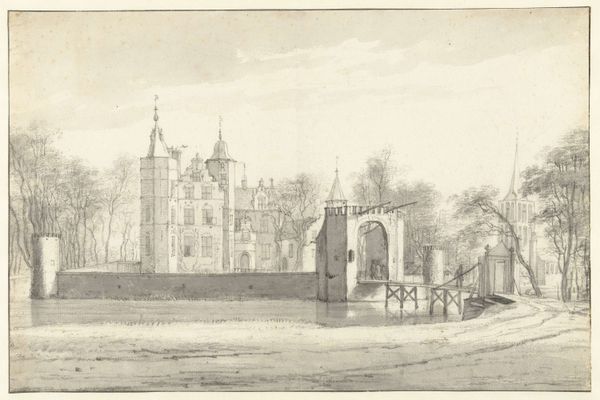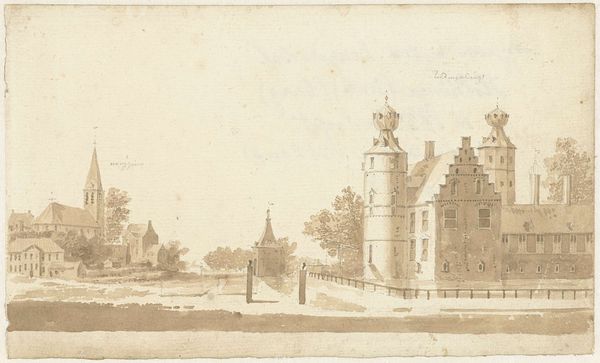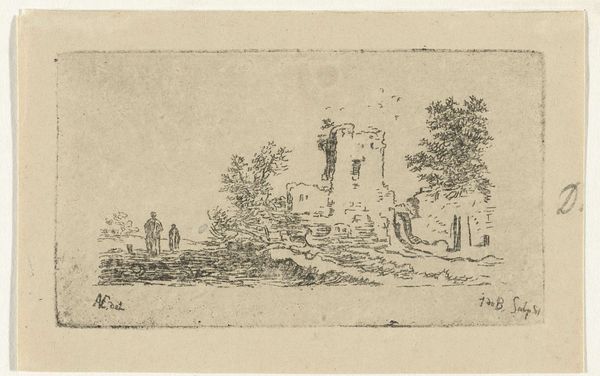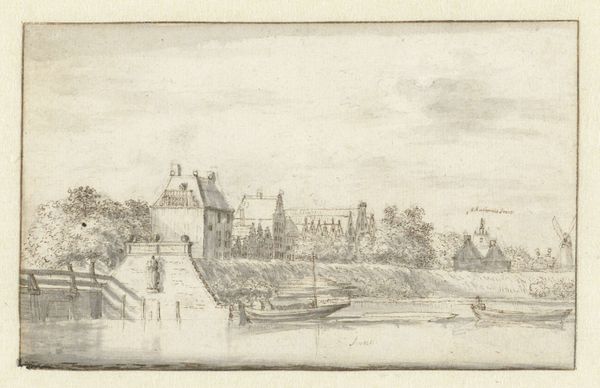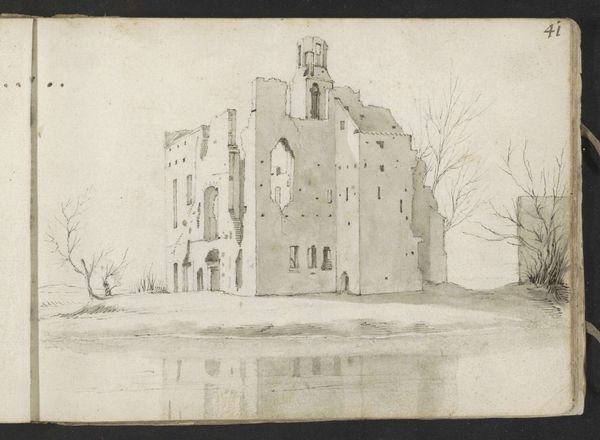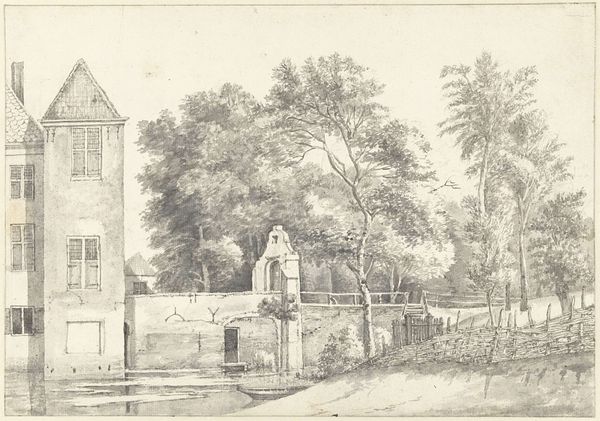
drawing, print, etching, architecture
#
drawing
# print
#
etching
#
landscape
#
etching
#
architectural drawing
#
architecture drawing
#
architecture
Dimensions: height 124 mm, width 270 mm
Copyright: Rijks Museum: Open Domain
Curator: Ah, there's something haunting about this. It reminds me of a ghost story I heard when I was a kid, told around a campfire. The building stands stoic against the slightly-faded page. There's a real sense of memory here, faded and imprecise but compelling all the same. Editor: Absolutely, and there’s a rich historical context embedded within it, too. This is “Batestijn, bij Vianen” by Jan de Beijer, likely created sometime between 1751 and 1758. It’s an etching, capturing a Dutch landscape. But it is not just about beautiful landscapes, this composition serves as an important visual record of specific sites at the time. Curator: Visual record...yes, almost like a pre-photographic postcard! You know, looking closer, it almost feels like the artist captured a ruin in its last moment, and the subtle use of light enhances the sense of transience. Did the building survive or...? Editor: Sadly, no, it didn't survive. These landscape drawings were commissioned to keep detailed accounts of old medieval castles before they crumbled and vanished from cultural memory due to urban developments and the changing of the aristocracy and the political landscape of the region. Curator: Ah, so a political act through landscape? Preserving the memory and the status through documenting architectural presence? That shifts my perspective completely. Now the faded ink seems not so much haunting, but like an act of careful preservation, of honouring. Editor: Exactly. Landscape art is very rarely *just* landscape art. The choices about what to depict and how always carry a story about power, ownership, and legacy. Think about whose perspectives often get excluded when the grand narratives are built. The architecture immortalized are of only one group of society, and they reinforce the established historical hierarchies, but only for so long. Curator: I'm thinking about how landscape and architectural art serve a function beyond aesthetics, embedding stories of history and power. It makes me consider my place, and question, what will outlive me and why? Editor: Yes. The power structures these works subtly reify are perpetually in flux, their impact continuously debated, renegotiated, and sometimes dismantled. I suppose it also helps inform ways in which we decide to preserve for the future, which places we wish to remember and immortalize.
Comments
No comments
Be the first to comment and join the conversation on the ultimate creative platform.
